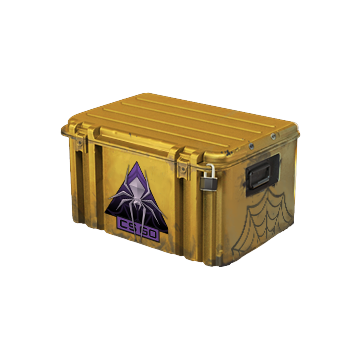Balbowa Insights
Your source for the latest news and informative articles.
Diving Deep into the CSGO Cases Market: Where Luck Meets Strategy
Unlock the secrets of the CSGO cases market! Discover how luck and strategy collide to boost your game and wallet. Dive in now!
Understanding the Economics of CS:GO Cases: A Comprehensive Guide
The economics of CS:GO cases play a crucial role in understanding the microtransactions within the game. Players invest real money into purchasing cases, which contain various skins and other cosmetic items. The market demand for these skins drives the economy, influencing prices and player behavior. For instance, limited-edition cases often see a spike in demand, leading to inflated prices on third-party marketplaces. Understanding these trends can help players make informed decisions on when to buy or sell, potentially maximizing their returns.
Moreover, the CS:GO case economy is not solely reliant on player purchases. Distribution events, game updates, and tournaments can all impact the market. For example, when new cases are released, older cases may drop in value, creating opportunities for savvy players to capitalize on the fluctuations. Additionally, sentiment within the community can greatly influence prices; hype surrounding a new skin or event can lead to increased purchases and investment. Therefore, staying informed and analyzing these trends is essential for anyone looking to navigate the complexities of the CS:GO case economy.

Counter-Strike is a popular first-person shooter game that emphasizes teamwork and strategy. Players can acquire various skins for their weapons, including the Silver Case, which is sought after for its unique designs. The game's competitive nature has made it a staple in esports, attracting players from around the world.
Top Strategies for Maximizing Your CS:GO Case Opening Success
When it comes to improving your CS:GO case opening success, strategic planning is essential. One of the top strategies is to research market trends. By keeping an eye on the current prices of skins and trends in the CS:GO community, players can make well-informed choices about which cases to purchase. Additionally, leveraging sites that track skin prices can help you identify high-value cases. Consider creating a list of cases that have historically provided lucrative returns, and focus your resources on those.
Another effective strategy involves timing your openings. Statistics show that certain times of the day or week yield better results based on player activity and demand. For instance, opening cases during special events or right after a major CS:GO update can lead to finding rare skins since the market may be experiencing fluctuations. Lastly, taking advantage of promotional events or giveaways can enhance your chances of success without additional costs, so always stay vigilant for such opportunities.
What Are the Odds? Analyzing the Rarity and Value of CS:GO Skins
In the world of CS:GO skins, rarity plays a pivotal role in determining both the value and desirability of each item. Skins are classified into various tiers based on their scarcity, with the most coveted items often being those classified as Legendary or Rare. To better understand the odds, players and collectors typically refer to the skin's float value, which indicates the wear and tear of the skin. This value, combined with the skin's rarity tier, establishes its market price and overall desirability within the community. For instance, a factory-new skin can fetch significantly higher prices when compared to one that has seen a lot of use, even if both items have the same rarity.
Furthermore, the market dynamics for CS:GO skins are influenced not only by rarity but also by community trends and events. During special events or updates, certain skins can spike in value as demand surges, impacting the overall economy of virtual items. Notably, skins featuring unique designs or those linked to professional players and teams can add further layers to their value. As such, investing in CS:GO skins necessitates a keen awareness of the changing market landscape, making it imperative for collectors and gamers to stay informed about trends and probabilities. Ultimately, understanding the odds and statistical rarity can empower players to make savvy purchases and trades in this vibrant digital marketplace.